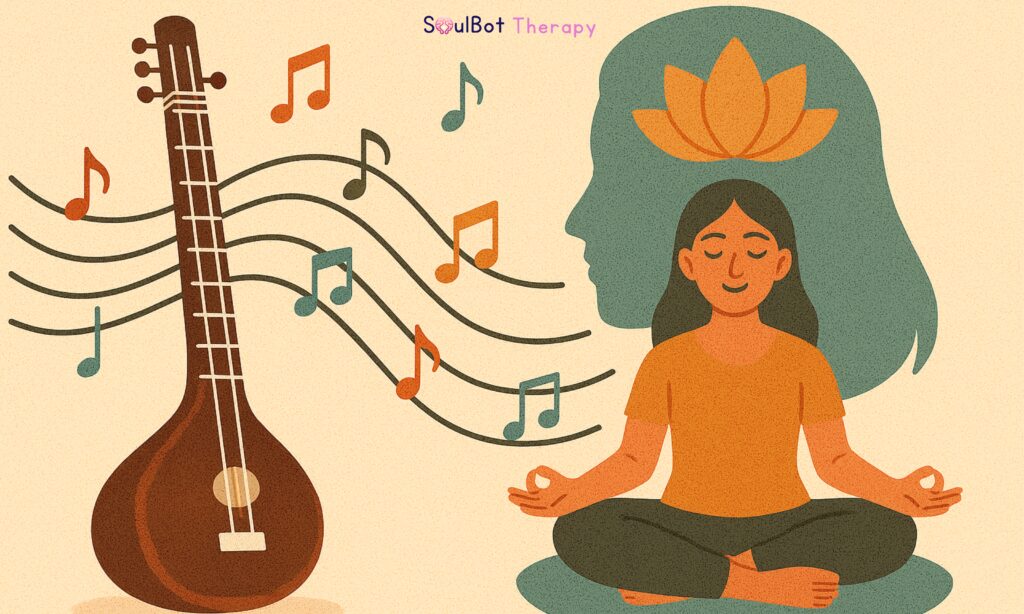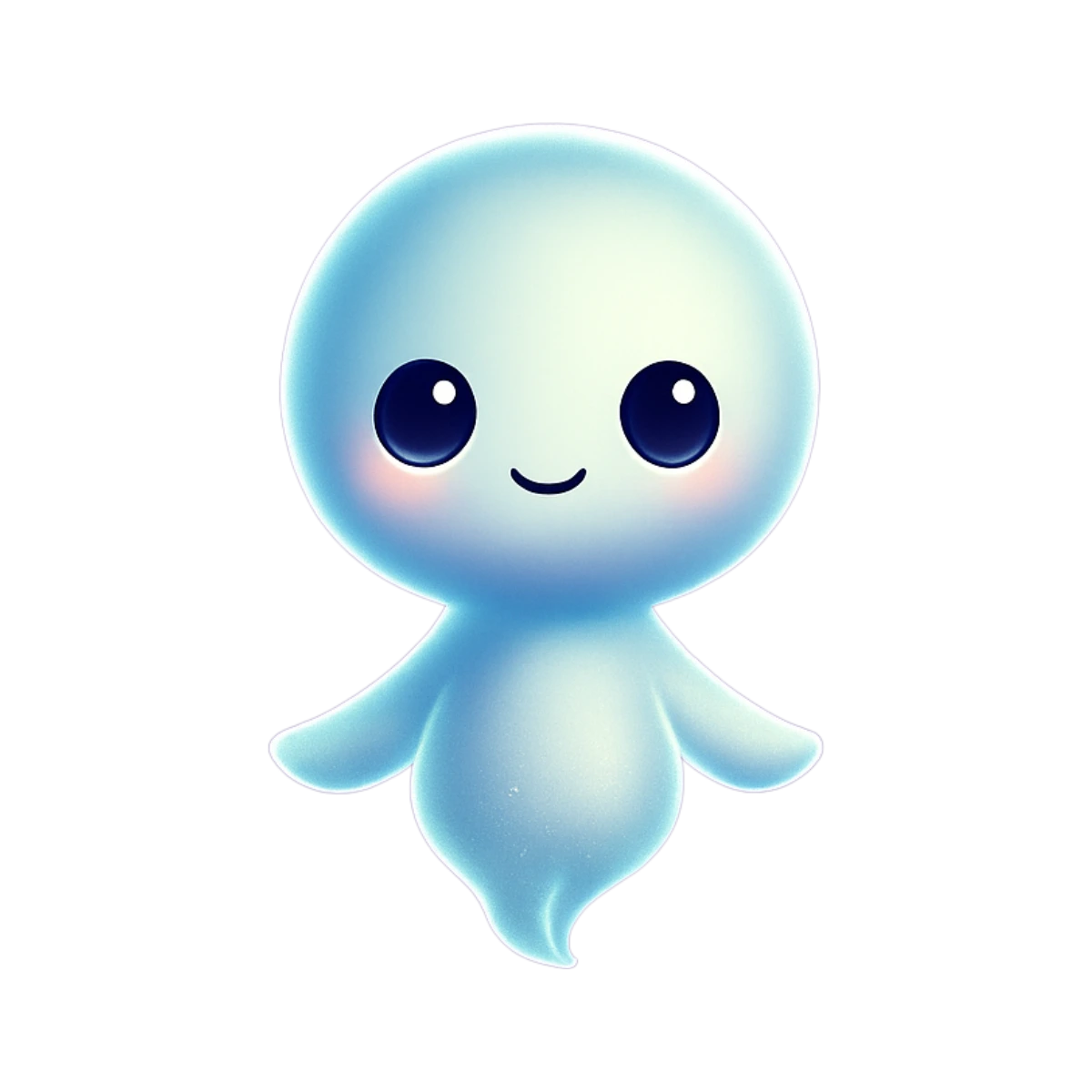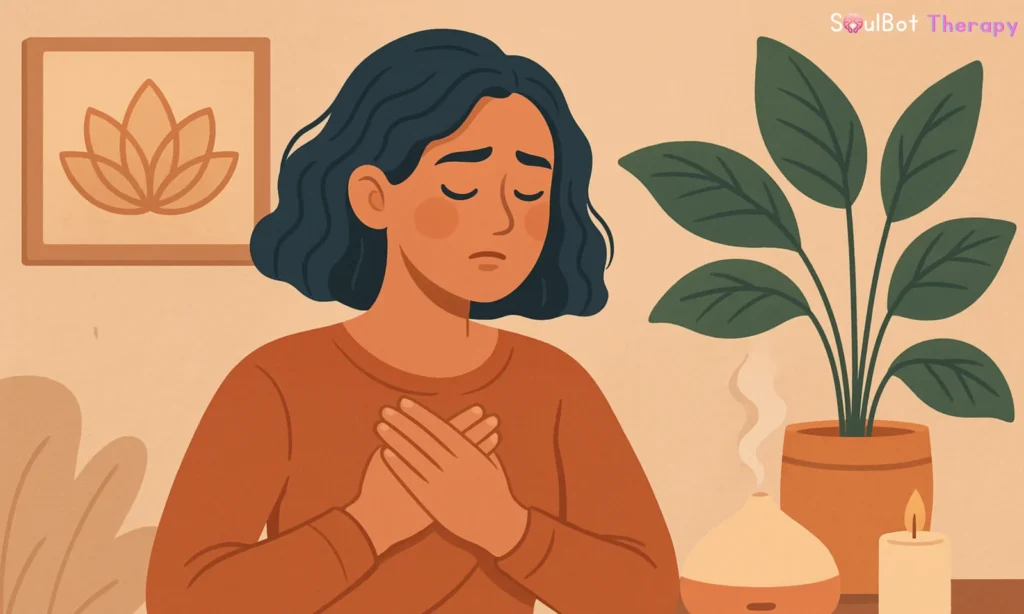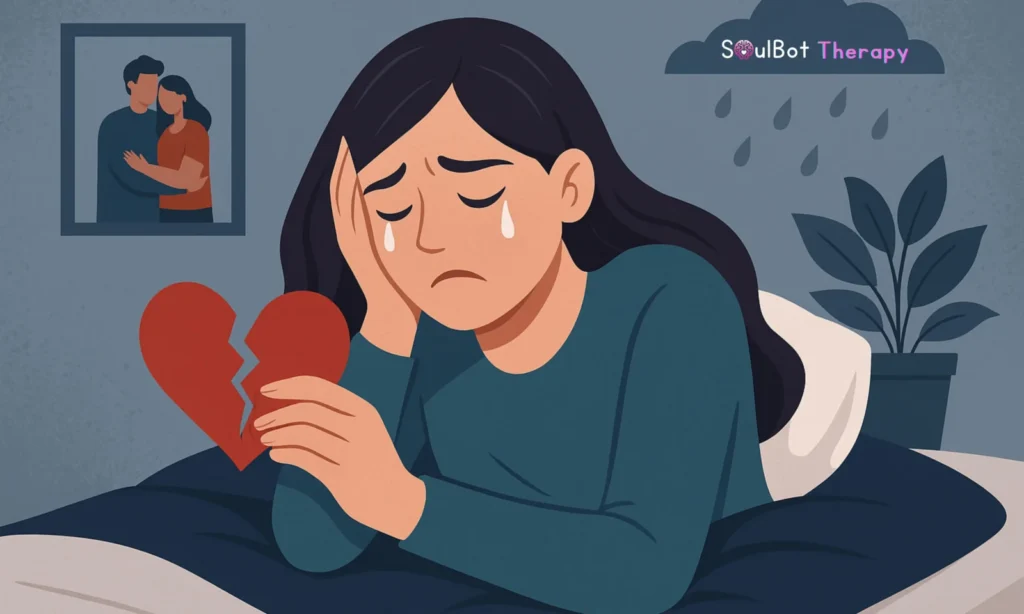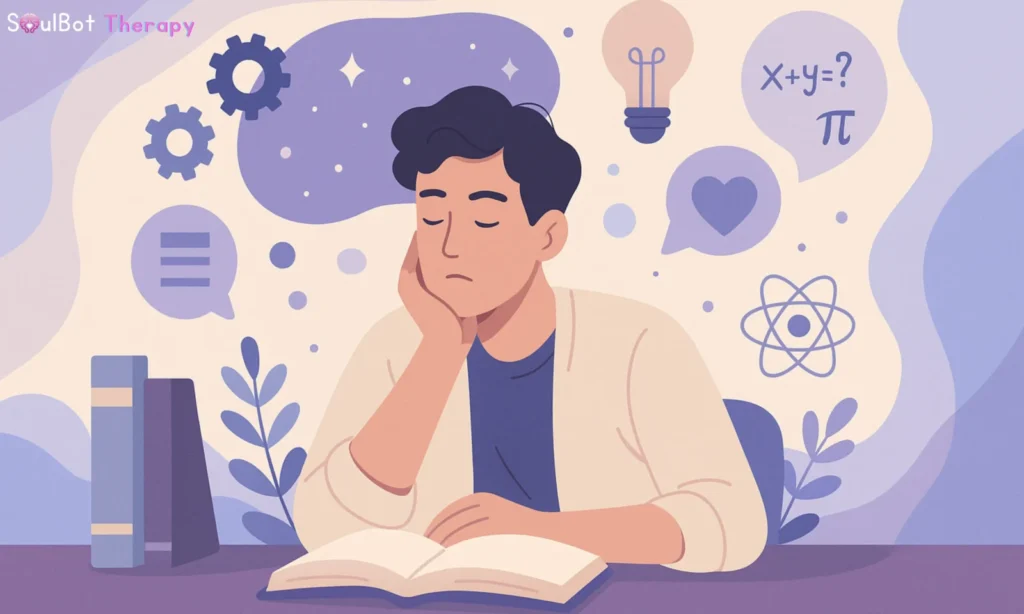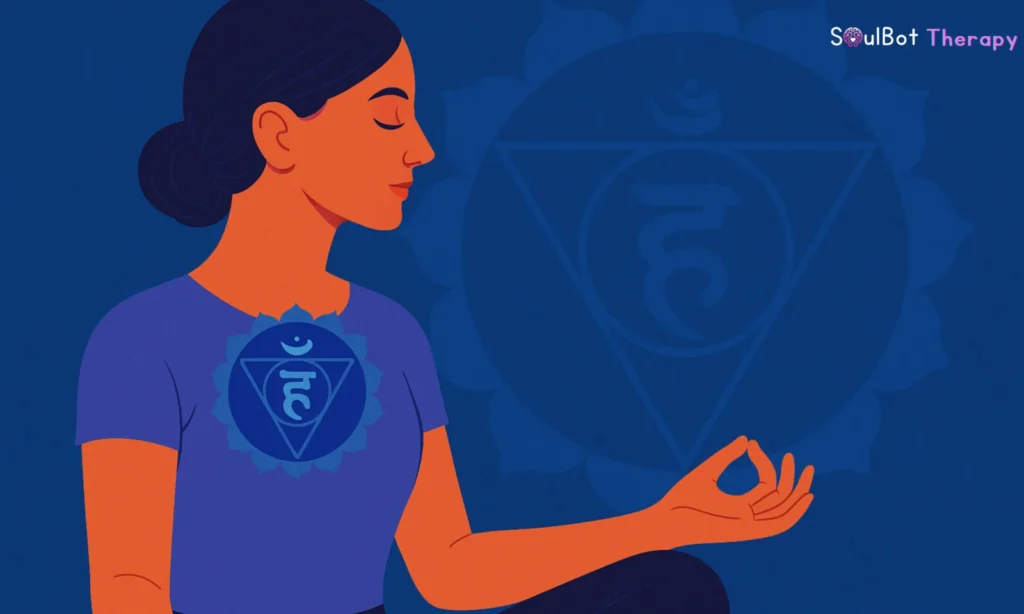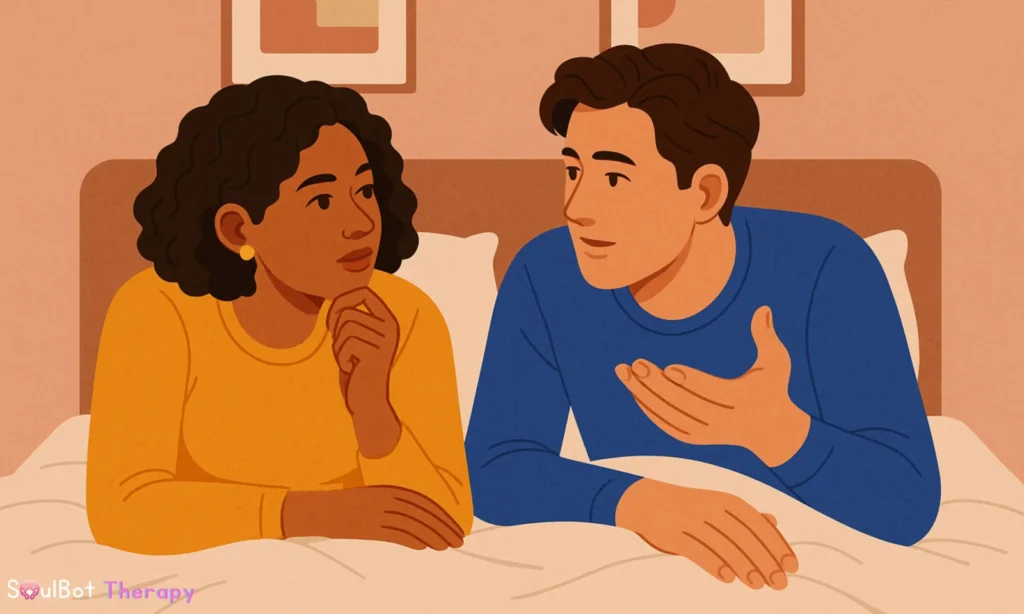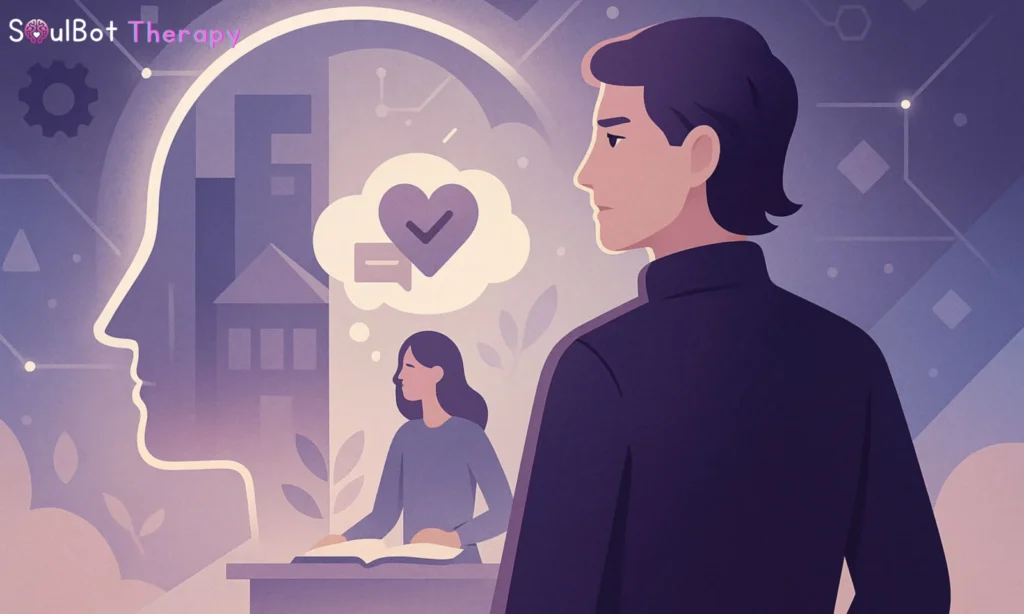Music isn’t just entertainment’s medicine for the mind. In Indian classical traditions, Raga Therapy has been practised for centuries to restore balance between the body, mind, and emotions. But what exactly is raga therapy, and how can you use it to heal stress, anxiety, or even sleeplessness? Let’s break it down.
✨ Ready to explore how music impacts your mind? Try our Personality Test to see how you connect with sound and sentiments.🌿 What Is Raga Therapy in Simple Words?
Raga therapy is the use of specific ragas (melodic frameworks in Indian classical music) to influence mood, energy, and mental well-being. Each raga has a unique scale, rhythm, and emotional “colour,” which activates certain states of mind: calmness, joy, focus, or relaxation.
Think of it as music meditation, where sound vibrations tune your nervous system the same way yoga or breathwork does.
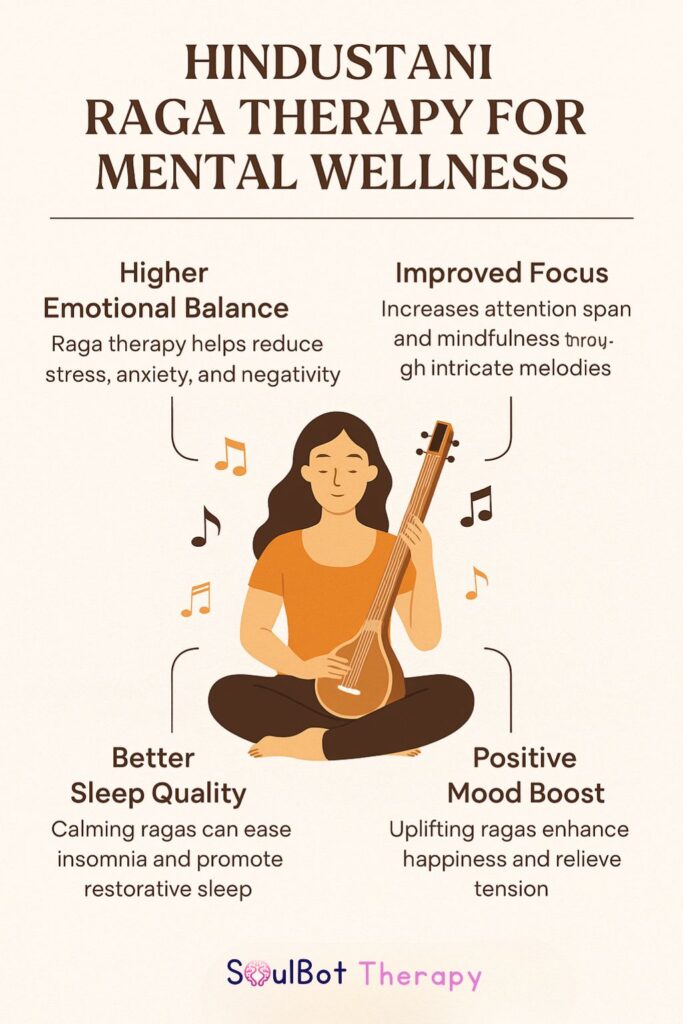
🎶 How Does Raga Therapy Heal the Mind?
Modern neuroscience shows that music stimulates the brain’s reward system, reduces cortisol (stress hormone), and activates parasympathetic responses.
In Ayurveda and Indian philosophy, ragas are believed to balance the doshas (mind-body energies).
Here’s how raga therapy helps:
- Reduces anxiety and panic by slowing the heart rate and breathing
- Improves sleep quality by calming overactive thoughts
- Boosts focus and Productivity through rhythm and melody
- Helps in emotional release—grief, anger, or stress can soften through music
- Supports holistic healing when combined with mindfulness or meditation
🎼 Best Ragas for Mental Healing
| Raga | Best Time to Listen | Emotional / Mental Benefit |
|---|---|---|
| Raga Bhairav | Early Morning (Sunrise) | Creates calmness, reduces anxiety, promotes mindfulness |
| Raga Yaman | Evening (Twilight) | Uplifts mood, helps with emotional balance after stress |
| Raga Darbari | Night (Late Evening) | Relieves stress, soothes the mind, aids in sleep |
| Raga Malkauns | Midnight | Induces deep relaxation, reduces negative emotions |
| Raga Hamsadhwani | Morning/Afternoon | Boosts positivity, enhances focus and clarity |
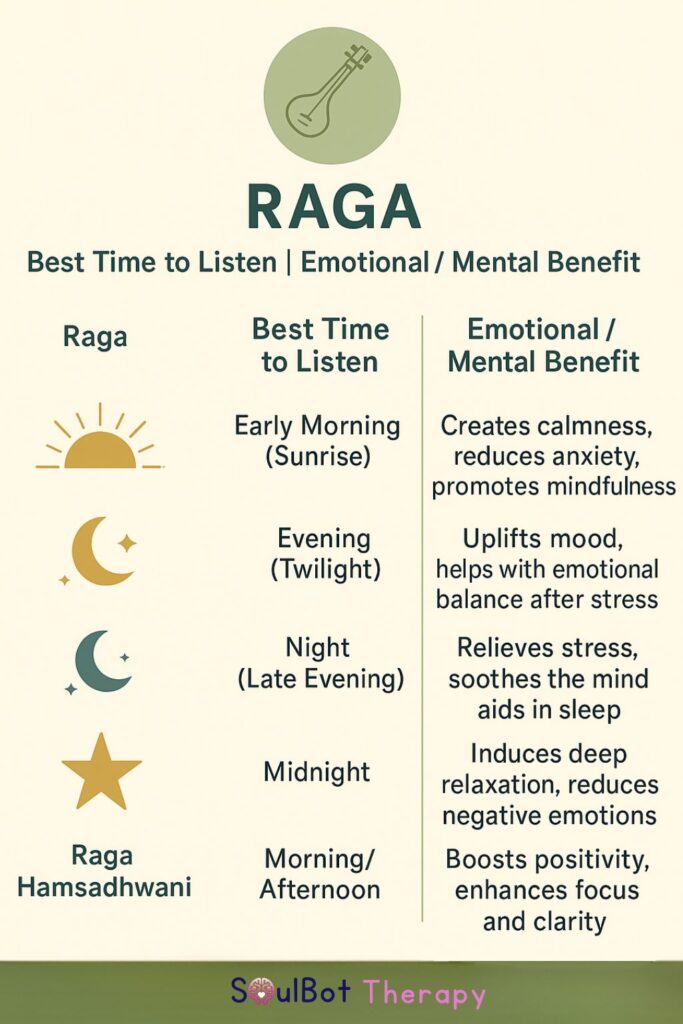
How Does Raga Therapy Work in Mental Healing?
Raga therapy uses specific ragas from Indian classical music to target moods and emotions. For example:
- Raga Darbari – helps reduce anxiety and tension
- Raga Ahir Bhairav – brings calmness in the morning
- Raga Todi – used for deep emotional release
This isn’t just spiritual fluff; studies on emotional balance through music show that ragas influence the autonomic nervous system, which controls heart rate and stress response. That’s why therapists are increasingly blending raga therapy with music therapy for mental health.
💡SoulFact: A study published in Frontiers in Psychology shows that music interventions reduce stress, anxiety, and depression while improving overall well-being.
🎧 How to Practice Raga Therapy at Home
- Start your day with Raga Bhairav during sunrise while meditating.
- During stressful evenings, play Raga Yaman to relax after work.
- If you struggle with insomnia, listen to Raga Darbari or Malkauns before bed.
- While studying or working, try Hamsadhwani to boost mental clarity.
👉 No need to be a classical music expert, curated playlists on YouTube and Spotify already exist.
“Music can heal the wounds which medicine cannot touch.” – Debasish Mridha.
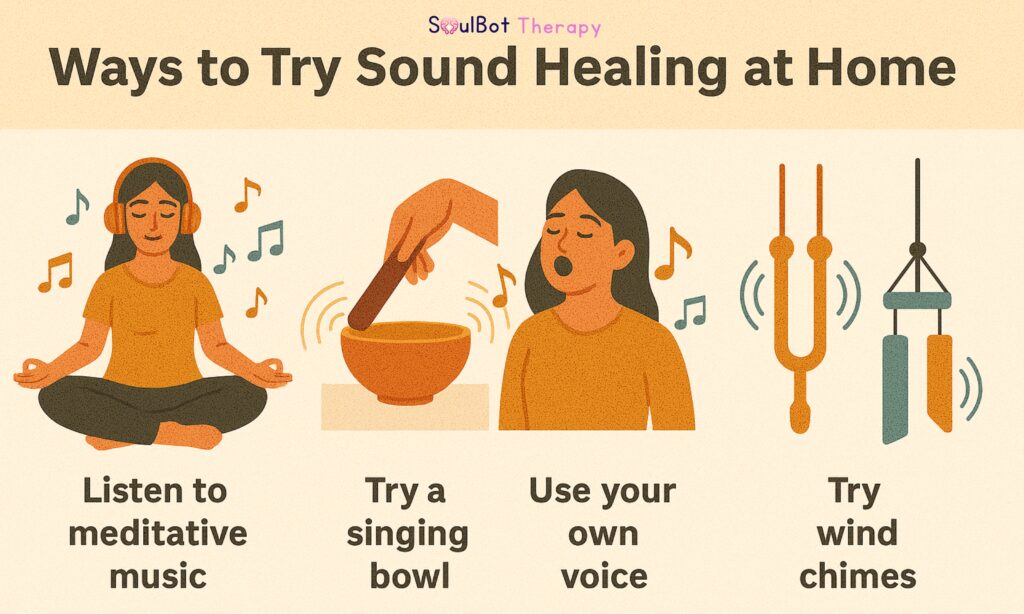
💡SoulFact: According to Harvard Health, music can act as medicine, controlling breathing, lowering blood pressure, and calming the nervous system.
Quick Look: Sound Healing Benefits with Raga Therapy
| Benefit | How It Helps | Example Ragas / Practices |
|---|---|---|
| Stress Relief | Lowers cortisol and calms the nervous system | Raga Darbari, guided meditation music |
| Better Sleep | Encourages alpha brainwave activity | Raga Ahir Bhairav, soft instrumental lullabies |
| Emotional Balance | Helps release built-up emotions, regulates mood | Raga Todi, deep instrumental sessions |
| Focus & Productivity | Improves concentration and mental clarity | Tanpura drone, flute ragas |
| Pain Management | Reduces perception of pain via sound vibrations | Singing bowls, rhythmic drumming |
✨ Final Thought
Raga therapy bridges ancient wisdom and modern mental health science. It’s not just about listening to music, it’s about tuning into yourself. When you let ragas flow through your mind, you’re not escaping life; you’re re-centring in it.
💬 Feeling overwhelmed? Chat with SoulBot, your AI mental health companion, for instant calming guidance.
